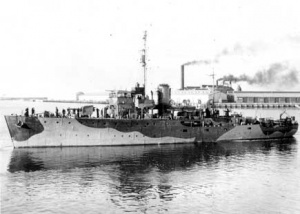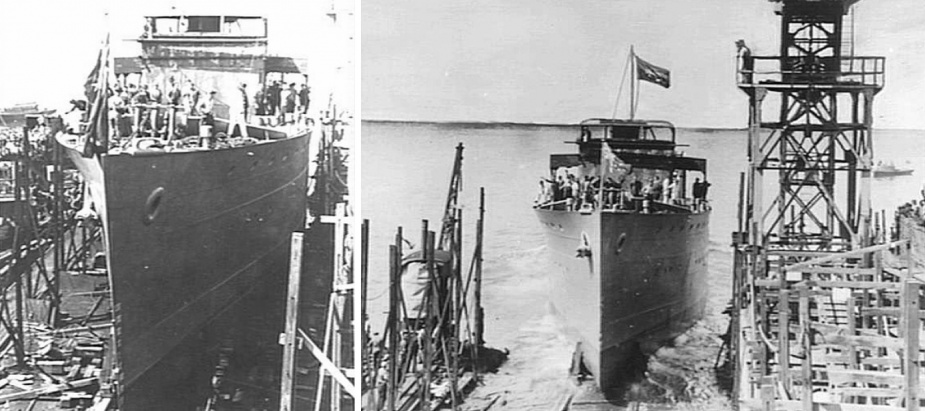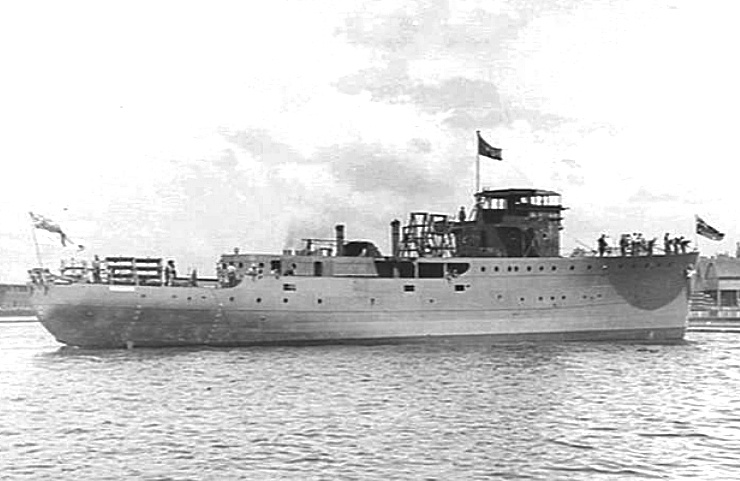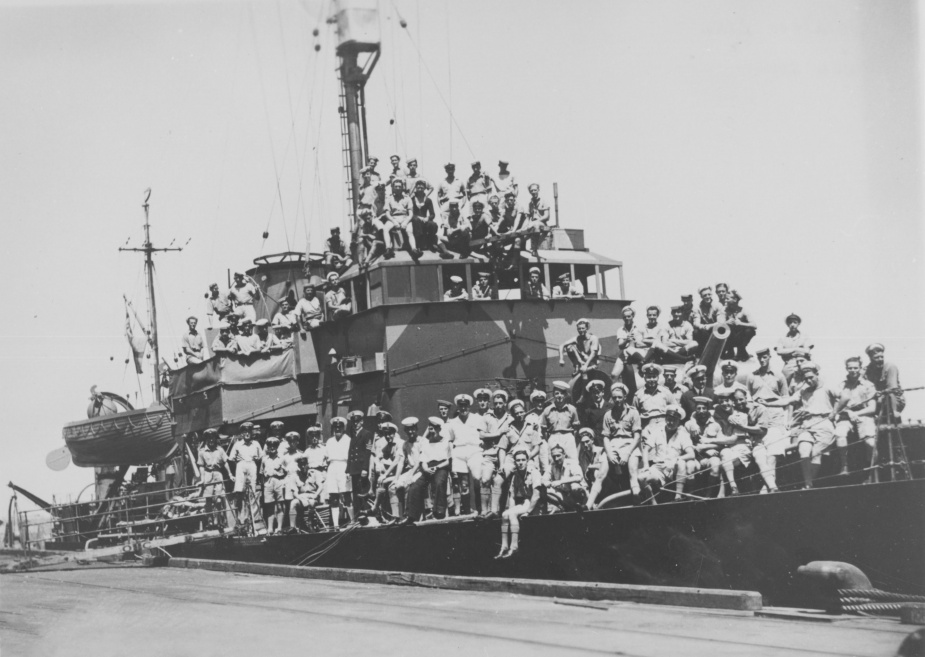HMAS Wallaroo
| Class |
Bathurst Class |
|---|---|
| Type |
Australian Minesweeper |
| Pennant |
J222 |
| Builder |
Poole & Steel Ltd, Sydney |
| Laid Down |
24 April 1941 |
| Launched |
18 February 1942 |
| Launched by |
Mrs Poole, wife of the Chairman of Directors, Poole & Steel Ltd |
| Commissioned |
15 July 1942 |
| Decommissioned |
11 June 1943 |
| Fate |
Lost at sea on 11 June 1943 |
| Dimensions & Displacement | |
| Displacement | 650 tons |
| Length | 186 feet |
| Beam | 31 feet |
| Draught | 8 feet 6 inches |
| Performance | |
| Speed | 15 knots |
| Complement | |
| Crew | 85 |
| Propulsion | |
| Machinery | Triple expansion, 2 shafts |
| Horsepower | 2,000 |
| Armament | |
| Guns | 1 x 4-inch gun |
| Other Armament | 3 x 20mm Oerlikons |
| Awards | |
| Battle Honours | PACIFIC 1941-45 |

HMAS Wallaroo was one of sixty Australian Minesweepers (commonly known as corvettes) built during World War II in Australian shipyards as part of the Commonwealth Government's wartime shipbuilding programme. Twenty were built on Admiralty order but manned and commissioned by the Royal Australian Navy. Thirty six (including Wallaroo) were built for the Royal Australian Navy and four for the Royal Indian Navy.
HMAS Wallaroo was laid down at the yard of Poole & Steel Ltd, Sydney on 24 April 1941. She was launched by Mrs Poole, wife of the Chairman of Directors of Poole & Steel Ltd, on 15 July 1942. After fitting out she commissioned at Sydney on 15 July 1942 under the command of Lieutenant Eric S Ross RANR(S).
Wallaroo had a short and uneventful life. She commenced duty on anti-submarine patrols between Adelaide, Geraldton and Fremantle in September 1942. She was also employed on escort duties and minesweeping in the Fremantle area.
She met her end in the early hours of 11 June 1943 when she sank as the result of a collision with the United States Liberty Ship Henry Gilbert Costin. The collision occurred shortly after midnight off the Western Australian coast, approximately west of Fremantle. The night was dark and overcast and in accordance with wartime precautions the vessels were steaming without navigation lights burning.
Some four hours after the collision, while endeavouring to reach Fremantle, Wallaroo sank. Henry Gilbert Costin reached port safely with no casualties and only minor damage. Three ratings from Wallaroo lost their lives at the time of the collision. They were Able Seaman Joseph John Clarke from Port Melbourne (Victoria), Able Seaman Daris Leo Bernard Cowen from Cygnet (Tasmania) and Motor Mechanic 4th Class George William Garratty from Casino (New South Wales). All three men are commemorated on the Plymouth Naval Memorial in Devon, England for those naval personnel who lost their lives and have no grave other than the sea.
Further reading
- 'The Corvettes: Forgotten Ships of the Royal Australian Navy' by Iris Nesdale - published by the author, October, 1982.
- 'Corvettes - Little Ships for Big Men' by Frank B Walker - published by Kingfisher Press, NSW, 1996.
- 'The Australian Centenary History of Defence Volume III, The Royal Australian Navy', edited by David Stevens, Oxford University Press, South Melbourne, Victoria, Australia, 2001.















